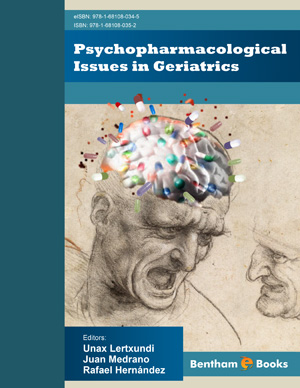Abstract
The simultaneous use of more than one antipsychotic in the management of psychiatric diseases has become a common practice worldwide. Although some theoretical bases have been suggested supporting this practice known as antipsychotic polypharmacy (APP), there is more personal experience than evidence-based behind it. APP is more frequent among young men. Nevertheless, some authors have estimated an APP prevalence in patients aged 65 or more up to 25% or even higher in the outpatient setting. Antipsychotics in the elderly are mainly used in the management of dementia-related behavioural alterations and schizophrenia but, as guidelines recommend, they should be used for short-term treatments. This limitation of duration of treatment has been associated with a wide range of potential risks like cerebrovascular events, hip fracture, pneumonia, QT prolongation, metabolic disorders or even death. These risks are boosted when geriatric population and high dosage derived from polypharmacy are considered. In this concern, some special considerations should be taken into account, optimal antipsychotic election according to patient´s morbidities and other medications in order to avoid interactions, maximal daily dosage, optimal follow-up intervals and recommendations, etc.
Keywords: Antipsychotic Association, Antipsychotic Combination, Antipsychotics, Cerebrovascular Events, Dementia, Elderly, Geriatric, Geriatric Institution, Health and Welfare Centre, Hip Fracture, Hospitalization, Medication Utilization, Metabolic Alteration, Morbidity, Mortality, Older Adults, Pneumonia, Polypharmacy, Stroke, Schizophrenia.


















